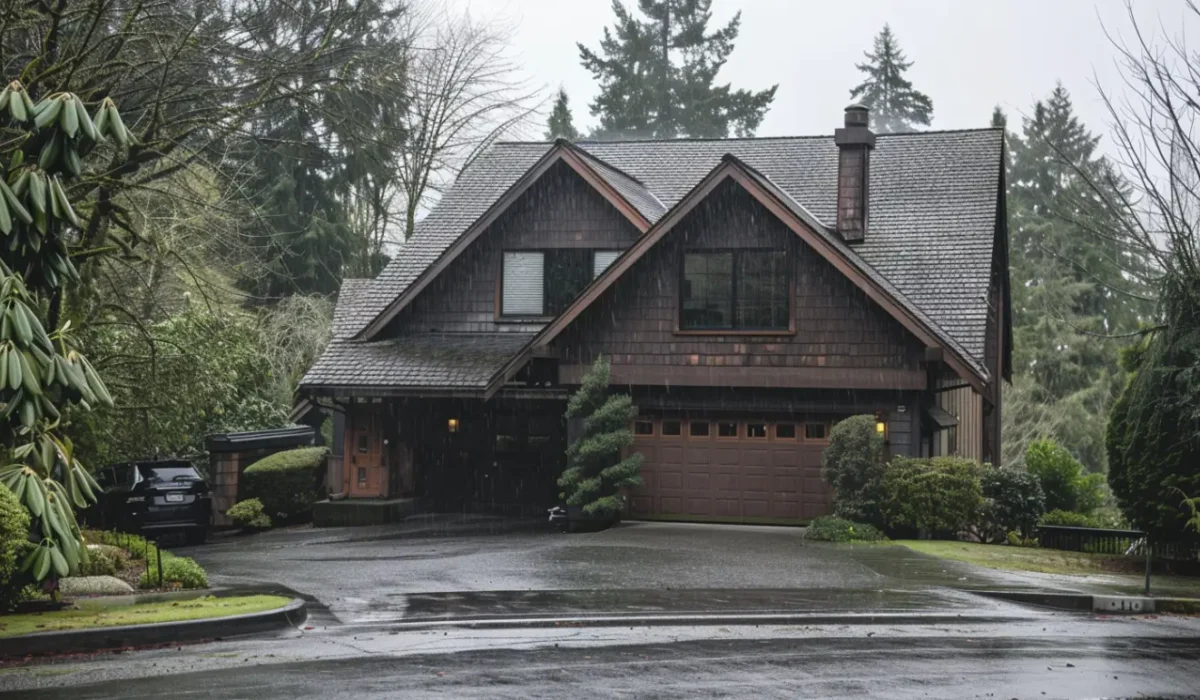Few things alarm homeowners faster than the sudden appearance of a water stain on the ceiling or the dreaded dripping sound during a storm. Roof leaks can lead to serious damage if not addressed promptly. In Keller, TX, where unpredictable weather and seasonal storms are common, acting quickly when you detect a leak can save you thousands in repairs and preserve the integrity of your home.
Here’s what you should do the moment you notice a leak in your roof.
Step 1: Contain the Water
Your first priority should be preventing further interior damage. If water is actively dripping, place a bucket, pan, or large container under the leak to catch the water. If the leak is spreading along a ceiling or down a wall, use towels or tarps to protect nearby furniture and flooring.
You may also want to poke a small hole in the bulging portion of the ceiling if water is collecting behind it. This allows it to drain in a controlled manner instead of bursting and causing a much larger mess. Be sure to place a bucket underneath and wear protective gear.
Step 2: Minimize Interior Damage
After you contain the leak, begin drying any wet surfaces. Use fans, towels, or a wet/dry vacuum to remove moisture from carpets, hardwood floors, or drywall. Moisture that lingers too long can lead to mold growth, which brings its own set of health and repair issues.
In Keller’s humid climate, mold can start forming in as little as 24–48 hours, so don’t delay. If any insulation, drywall, or ceiling materials feel soggy, you may need to remove them to allow for proper ventilation and drying.
Step 3: Locate the Source (If Safe)
While it’s not always easy to identify where the leak is coming from, sometimes you can trace it back. Common culprits include:
- Damaged or missing shingles
- Cracked flashing around chimneys or vents
- Clogged gutters causing water backup
- Skylights or roof valleys
- Improperly sealed roof penetrations (vents, satellite dishes)
That said, never attempt to climb on your roof during or after a storm. Wet shingles are slippery and dangerous. It’s best to leave the detailed inspection to professionals who know how to walk a roof safely.
Step 4: Document the Damage
Before making any repairs, take photos of the affected areas — both inside and outside (if safely accessible). Capture water stains, ceiling damage, warped wood, or visibly damaged roofing materials. These photos will be essential if you file a homeowners insurance claim. They also help your roofer understand the extent of the damage when they arrive on-site.
Keep a record of the time the leak was discovered, any steps you took to mitigate it, and any additional damage that occurred afterward.
Step 5: Call a Roofing Professional Immediately
Time is of the essence when dealing with roof leaks. The longer water seeps into your home, the more likely it is to damage your insulation, drywall, electrical systems, and structural framing. Contact a trusted local roofer for an emergency inspection and repair.
KangaRoof in Keller, TX provides rapid response for leak emergencies, identifying the source and offering immediate repair solutions to minimize damage. As an OC Preferred Contractor and CertainTeed Master Shingle Applicator, their certified team is well-equipped to handle both minor leaks and major repairs.
Step 6: Avoid Temporary Fixes
While tarps and sealant sprays can provide a short-term barrier, they’re not reliable long-term solutions. A quick fix may stop the leak for now, but it won’t address underlying problems like damaged flashing, missing shingles, or compromised underlayment.
In some cases, what appears to be a small leak is actually a symptom of a larger roofing issue. Professional repair ensures your roof remains sealed, safe, and under warranty.
Step 7: Review Your Insurance Coverage
Once your roofer assesses the damage, it’s time to contact your insurance provider. Most policies cover sudden and accidental roof damage, such as that caused by storms, hail, or wind. Water damage from a roof leak may also be covered, depending on the cause and your individual policy.
Your roofing contractor can help document the damage, provide repair estimates, and guide you through the claims process to maximize your benefits.
Step 8: Plan for Long-Term Prevention
After the immediate crisis is handled, take proactive steps to prevent future leaks. Schedule regular roof inspections, especially after major storms. Keep gutters clean and clear of debris, and trim back tree limbs that could damage your roof during high winds.
If your roof is nearing the end of its lifespan—usually 20 to 25 years for asphalt shingles—it may be time to think about a replacement. Choosing a high-performance roofing system from trusted brands like Owens Corning can offer enhanced protection and lasting peace of mind.
Why Fast Action Matters
Delaying roof leak repairs can lead to long-term issues, such as:
- Mold and mildew infestation
- Wood rot in framing or decking
- Electrical hazards from water infiltration
- Damaged insulation and decreased energy efficiency
- Higher repair and restoration costs
A small leak today could turn into a full roof replacement tomorrow if left unchecked.
Read also our blog: What Hail Damage Looks Like and How to Spot It
